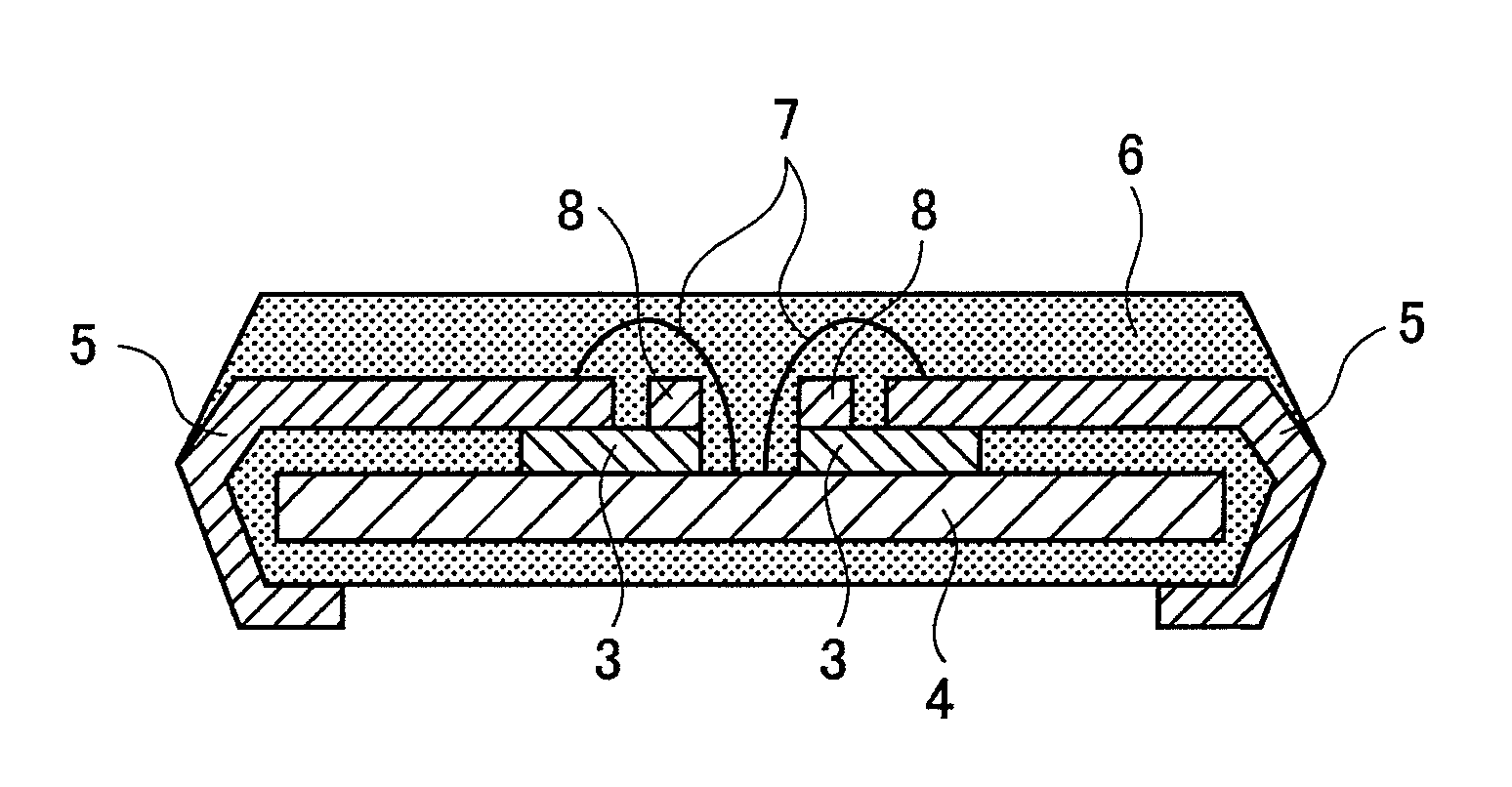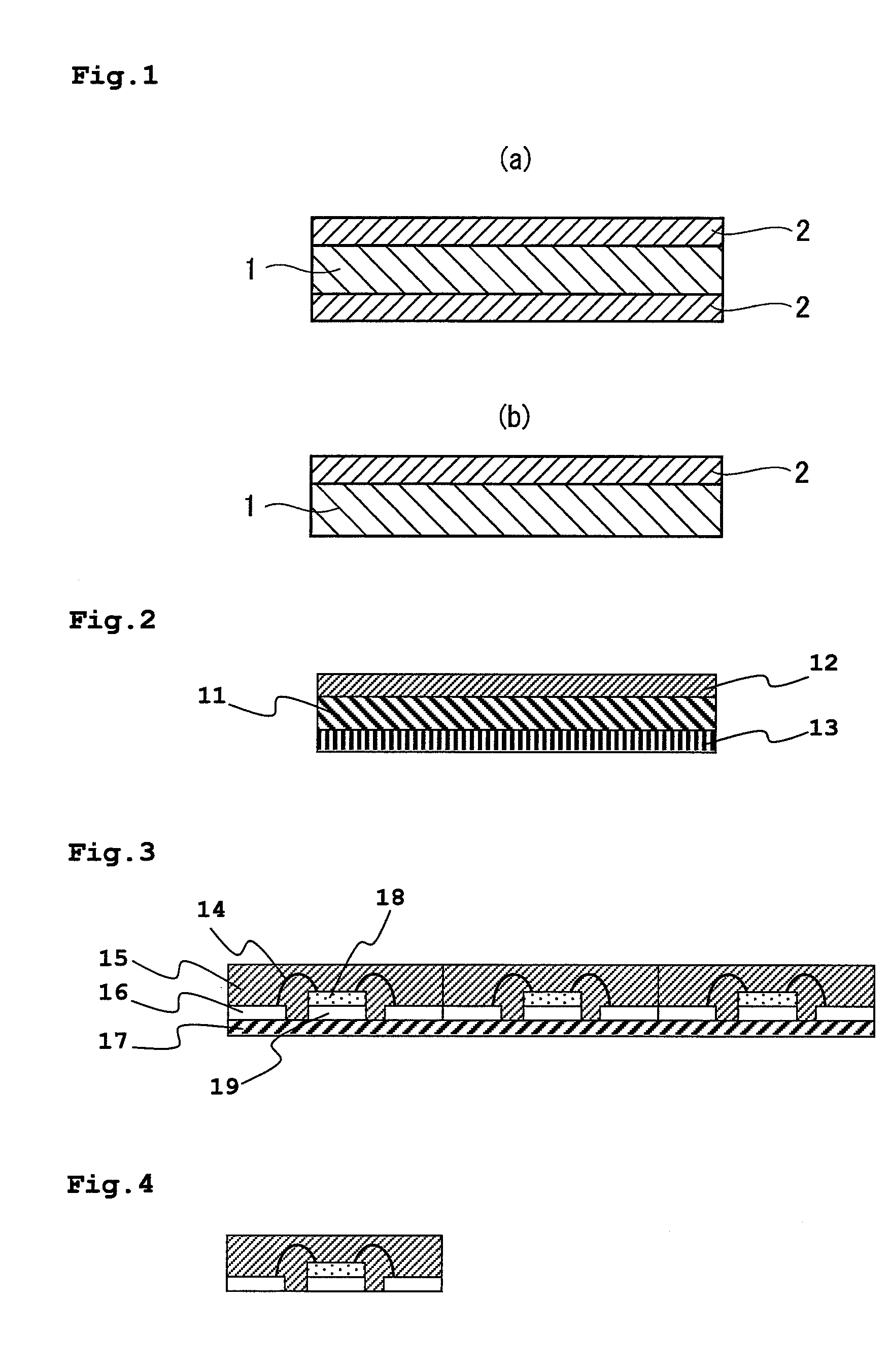Thermoplastic resin composition for semiconductor, adhesion film, lead frame, and semiconductor device using the same, and method of producing semiconductor device
a technology of adhesion film and semiconductor, which is applied in the direction of film/foil adhesive, heat-activated film/foil adhesive, semiconductor/solid-state device details, etc., can solve the problems of thermal damage of semiconductor elements, deterioration of the reliability of semiconductor packages, and unfavorable use of them
- Summary
- Abstract
- Description
- Claims
- Application Information
AI Technical Summary
Benefits of technology
Problems solved by technology
Method used
Image
Examples
example 1
[0102]The thermoplastic resin (A-1) obtained was dissolved in N-methyl-2-pyrrolidone (NMP) uniformly, and a coupling agent (trade name: KBM403, manufactured by Shin-Etsu Silicones Co., Ltd.) was added in an amount of 3 parts with respect to 100 parts of the thermoplastic resin (A-1), to give a resin composition varnish. The nonvolatile matter in the varnish, as determined after heating at 250° C. for 2 hours, was 40%. The varnish was then coated on both faces of a chemically finished polyimide film (trade name: Upilex SPA, manufactured by Ube Industries, Ltd.); dried at 90° C. for 5 minute and additionally at 250° C. for 10 minutes, forming an adhesive agent layer having a thickness of 25 μm, to give an adhesion film for semiconductor in the three-layer structure.
example 2
[0103]An adhesion film for semiconductor in the three-layer structure was prepared in a similar manner to Example 1, except that the thermoplastic resin (A-1) was replaced with the thermoplastic resin (A-2).
example 3
[0104]An adhesion film for semiconductor in the three-layer structure was prepared in a similar manner to Example 1, except that the thermoplastic resin (A-1) was replaced with the thermoplastic resin (A-3) and the coupling agent used was KBM573 (trade name, manufactured by Shin-Etsu Silicones Co., Ltd.).
PUM
| Property | Measurement | Unit |
|---|---|---|
| contact angle | aaaaa | aaaaa |
| glass transition temperature | aaaaa | aaaaa |
| temperature | aaaaa | aaaaa |
Abstract
Description
Claims
Application Information
 Login to View More
Login to View More - R&D
- Intellectual Property
- Life Sciences
- Materials
- Tech Scout
- Unparalleled Data Quality
- Higher Quality Content
- 60% Fewer Hallucinations
Browse by: Latest US Patents, China's latest patents, Technical Efficacy Thesaurus, Application Domain, Technology Topic, Popular Technical Reports.
© 2025 PatSnap. All rights reserved.Legal|Privacy policy|Modern Slavery Act Transparency Statement|Sitemap|About US| Contact US: help@patsnap.com



